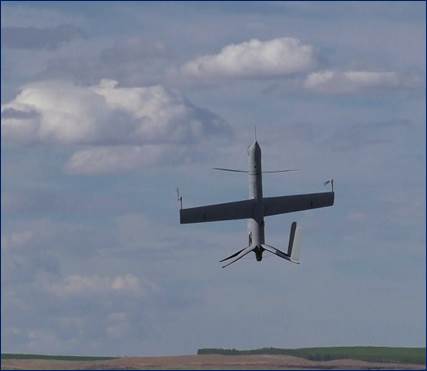
In collaboration with the University of Washington’s (UW) Autonomous Flight System Laboratory, Aerovel has developed a solution to the problem of strong winds affecting the flights and landings of its small Flexrotor Unmanned Aerial Vehicle (UAV).
In testing, buffeted by wind gusting in moments from 20 kt to nearly calm and back again, an Aerovel Flexrotor opened its rear fuselage into a petal of landing legs. It remained on-station as it prepared for touchdown, and landed gently on a target barely bigger than its leg span.
Its robust handling of these rough conditions is the product of several years’ collaborative research between Aerovel and the UW.
“A Flexrotor hovering like that is experiencing in seconds the whole of what is known in helicopter parlance as the translational-lift regime, in which not only aerodynamic loads but also control effectiveness change sensitively with relative wind,” Tad McGeer, Aerovel’s founder, commented.
“In order to achieve the robustness that we want in rough air, we had to handle this regime with some unusual autopilot design. I’ve been collaborating with UW for decades so it was natural for us to explore the problem together.”
The project became the doctoral research focus for Kris Gauksheim, who completed his PhD in 2021.
“Flexrotor stands apart from other Vertical Take-Off and Landing (VTOL) aircraft in its high efficiency and exceptional endurance,” says Dr Gauksheim, “but it turns out that its very efficiency, and autonomy, demand unusual care in flight control. It is all too easy to get into trouble. Only a limited amount of previous work is applicable, and it wound up having to be pruned and extended to produce a solution that is robust and practical for field service.”
Flexrotors can be used day or night for a diverse range of intelligence, surveillance, and reconnaissance on land and at sea. They can fly day and night, and now in adverse weather conditions.
Find suppliers & manufacturers of VTOL Unmanned Aerial Vehicles >>
The post Enhanced Flight Control of VTOL UAV in Windy Conditions appeared first on Unmanned Systems Technology.